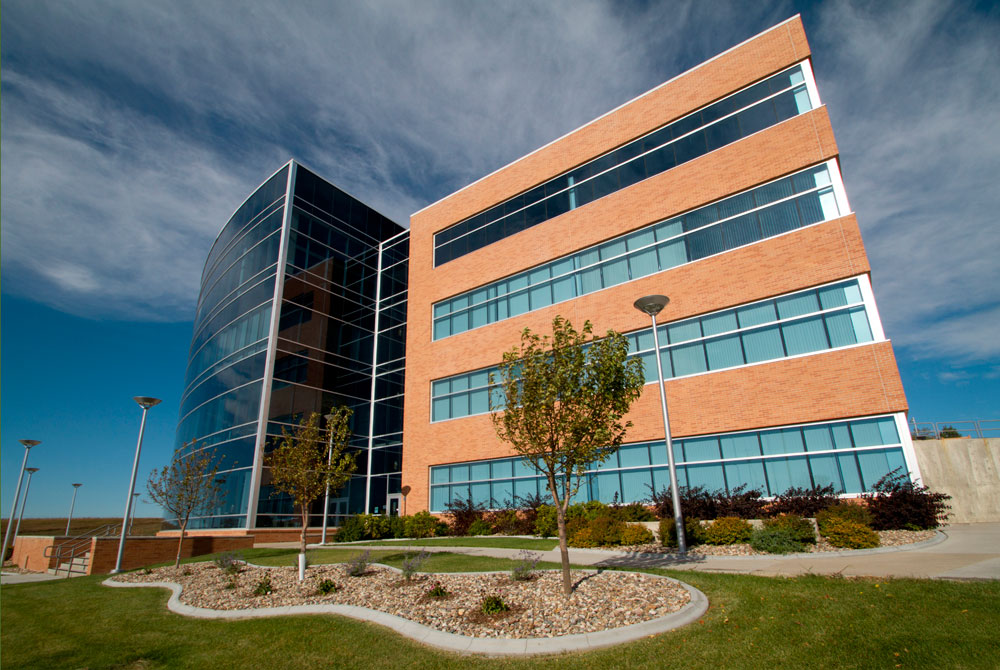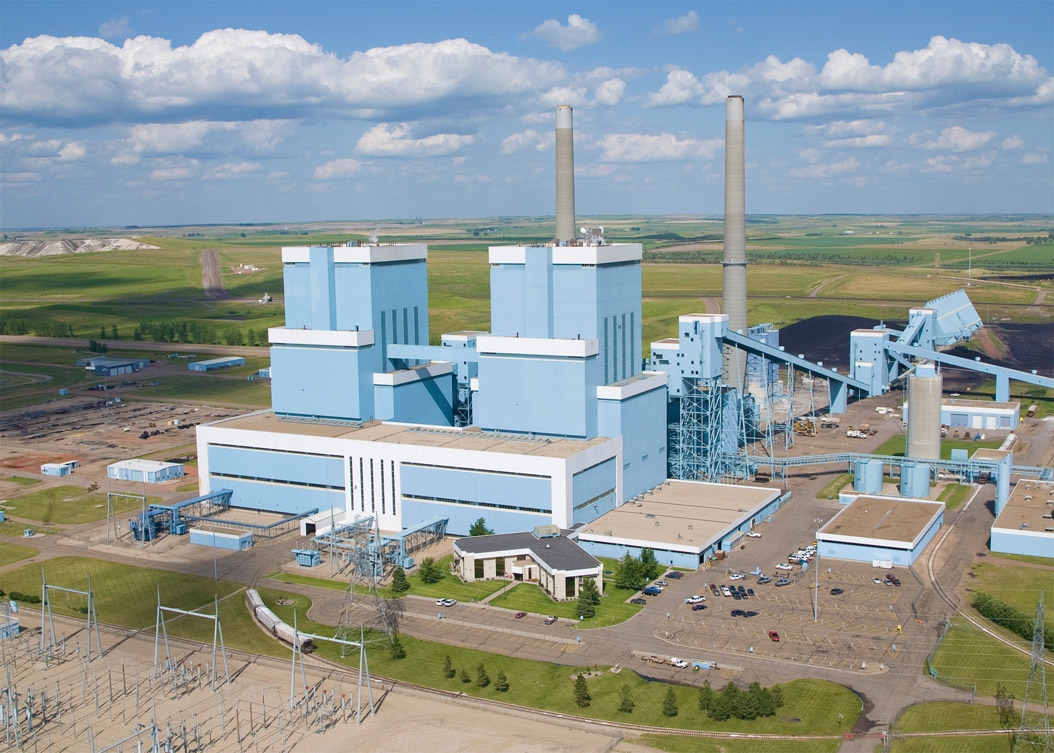- The chemical energy stored in coal is released when it is burned and changed to thermal (heat) energy that is used to produce steam.
- The steam turns a turbine, and that mechanical energy is used to turn a generator to produce electricity.
Steps in Electricity Generation from Lignite
- Lignite is delivered to the power plant.
- Depending on the power plant, the lignite is crushed to approximately ¼ inch size coal or pulverized into a fine powder so it will burn more quickly.
- The crushed or pulverized coal is then blown into a boiler combustion chamber, or furnace.
- Pipes inside the boiler carry water, which is turned to steam by the extreme heat of the combustion.
- The steam reaches temperatures of up to 1,000⁰ F.
- The steam is injected at high pressure into a turbine.
- The steam reaches pressures up to 3,500 pounds per square inch (psi).
- The high-pressure steam causes the turbine blades to spin, turning a drive shaft.
- The drive shaft is connected to a generator, where magnets spin within wire coils to produce electricity.
- The exhaust steam from the turbine is drawn into a condenser, which changes the steam back to its liquid state.
- The steam water is then returned to the boiler to repeat the cycle.
- Burning coal results in the production of bottom ash, fly ash, and various gases.
- The ash is captured and converted into useful by-products; the gases are "scrubbed" and then released through the emission stacks.
- Bottom ash is the large ash material that is removed from the bottom of the furnace.
- Its uses include aggregates in road bases, pavement, and as a product for sanding icy winter roads.
- Fly ash consists of particles that are removed from the exhaust.
- It is recycled and used for construction and other commercial purposes.
- Fly ash got its name because it could fly out from the power plant if it were not captured.
- Fly ash added to concrete results in a concrete that is easier to work with, stronger, lasts longer, and is of higher quality than concrete made with Portland cement.
- Some ready-mix concrete producers are replacing more than 30 percent of their cement with fly ash.
- It is used in the construction business for roads, bridges, sidewalks, curbs, foundations, commercial buildings, and homes.
-
Fly ash was used in the construction of the Fort Mandan Visitors Center in Washburn.
 NECE Building: Fly ash was used in the construction of the National Energy Center of Excellence at Bismarck State College.
NECE Building: Fly ash was used in the construction of the National Energy Center of Excellence at Bismarck State College.
- Other products enhanced by fly ash include carpet, paint, insulation, ceiling and flooring tiles, lumber, bricks, and shingles.
- Fly ash is also used to strengthen soil and as a soil stabilizer to prevent soil erosion.
- Bottom ash is the large ash material that is removed from the bottom of the furnace.
- The stack on a power plant acts like a chimney and allows exhaust to leave the plant.
- The visible plume that comes out of the stack at a coal-based power plant, particularly in winter, is almost all water vapor.
- North Dakota power companies have spent approximately 2 billion dollars ($2,000,000,000) in new technologies to control emissions from the power plants.
- The ash is captured and converted into useful by-products; the gases are "scrubbed" and then released through the emission stacks.

Antelope Valley Station near Beulah: North Dakota is one of only seven states to meet all air quality standards set by the federal (United States) government (as of 2014). North Dakota's "coal country" consistently receives an "A" grade in air quality from the American Lung Association. Photo courtesy of Basin Electric Power Cooperative
- Emissions Control Technology is used to remove pollutants from the exhaust before it is released into the air.
- Two types of particulate control devices for particulate matter are the baghouse and the precipitator.
- A baghouse is a giant filter that removes particles from plant exhaust.
- An electrostatic precipitator uses the attraction of positive and negative electrical particles to trap particles in the flue gas.
- Flyash trapped by the baghouse or electrostatic precipator is recycled and used for construction and other commercial purposes.
- Scrubbers are used to remove SOx or sulfur-based emissions.
- This is done with a chemical process.
- The flue gas mixes with a spray of water and a chemical (usually lime) to let the gasses combine with the spray to be removed.
- Nitrogen Oxides (NOx) are reduced by boiler enhancements and/or chemical additives.
- NOx occurs in nature with events such as lightning strikes and forest fires. NOx occurs in a boiler, car or furnace due to high temperature and the presence of Nitrogen and Oxygen.
- According to the US Environmental Protection Agency (EPA), 50 percent of NOx emissions are from automobiles and other mobile sources, 20 percent from electric power plants, and 30 percent from a variety of other sources such as industrial furnaces and manufacturing of materials.
- North Dakota's power plants have invested around $1 billion since 2006 in new technology to reduce emissions and increase efficiencies.
- North Dakota is one of only seven states that meets all of the EPA's clean air quality standards as of 2014.
- North Dakota plants are investigating the potential of capturing the CO2 from coal fired power plants and sequestering it deep underground.
- Two types of particulate control devices for particulate matter are the baghouse and the precipitator.


